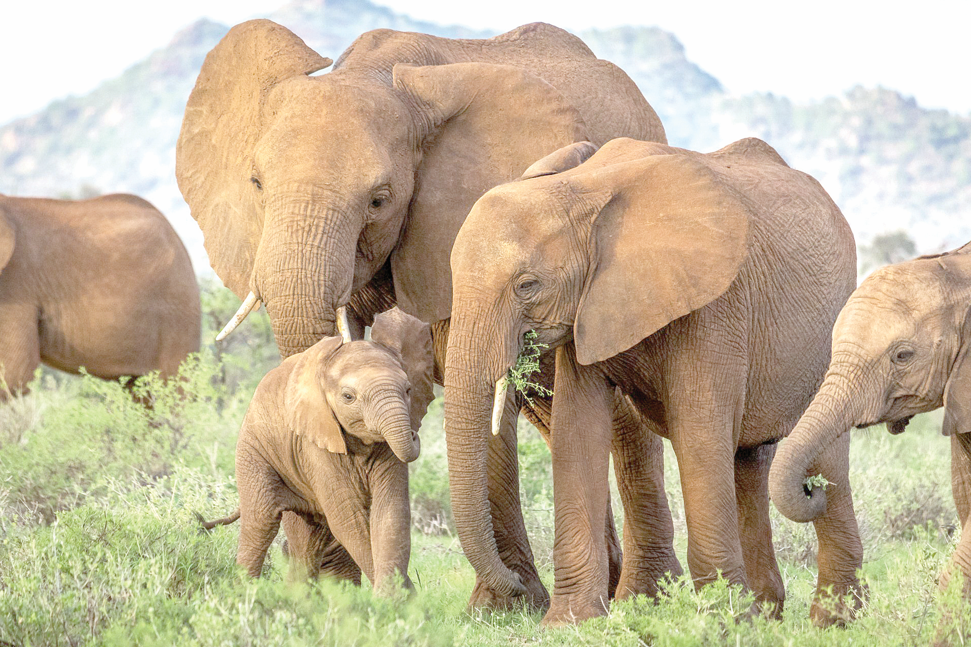Relocating elephants is essential for their conservation efforts

In the heart of the 42-square-kilometre Mwea National Reserve, Kirinyaga County, a family of five elephants rumbles as huge recovery trucks, helicopters hover around towards their location.
After being identified from the air, each animal is darted and then lifted one by one onto a recovery truck by train. Soon the elephants would embark on an important journey of a lifetime and a historic one in the conservation space.
A carefully orchestrated translocation to the Aberdare Ranges, a vast and lush mountain range in central Kenya, where they would join a new herd and thrive in the cooler highlands and more space is what awaited them that fateful morning. Critical exercise This delicate operation was not just about moving elephants, but curbing human-wildlife conflict.
It also ensures their safety, minimises stress, and secures their place in a more sustainable environment.
The elephant population has flourished from its maximum capacity of 50 to a whopping 156, overwhelming the ecosystem and requiring their relocation thanks to successful conservation efforts. In 1979, the reserve hosted 49 elephants, but their population has grown.
However, to minimize human-elephant conflict, the Kenya Wildlife Service (KWS) moved 50 elephants from the Mwea National Reserve to Aberdare National Park to reduce pressure on the Mwea ecosystem and promote ecological balance.
“This translocation is a critical exercise in which we are relocating 50 elephants in a single day. The goal of this translocation is to conserve our elephant population, ensure they are more comfortable, and prevent competition for food and water,” said Rebecca Miano, CS Tourism and Wildlife.
“When elephant populations become overcrowded, they often stray from protected areas and venture into surrounding communities, causing disturbances. This is a key form of conservation, benefiting both the animals and the local communities,” CS Miano added.
Dr Erustus Kanga KWS director general noted, “We have darted five elephants, which make up an entire family, including the mother, adults, and a baby. In total, we have relocated 44 elephants, and six more will be moved tomorrow.
Elephants typically live in family groups, and today we spotted two families that were close to each other. We chose to relocate the family of five, and all of them were tranquillized and safely brought here.
” Additionally, it was done to restock the Aberdare ecosystem, which is large, fenced, and ensures that the relocated elephants will not cause any conflicts. “When comparing the two ecosystems, Mwea spans 42 square kilometres, while Aberdare covers 767 square kilometres. The difference in size is significant, and with this, both the community and wildlife will be safe,” Dr Kanga noted.
Human-wildlife conflict Mary Makau, a farmer from Mwea, is pleased about the translocation of the elephants.
“We have lived alongside elephants for years, but their population has driven some into our villages, leading to conflict as they raid our farms for food. Fewer elephants mean they stay in the park, and we experience no problems,” she explained.
“We collaborate with KWS to ensure the elephants’ safety. Their translocation aims to lessen human-wildlife conflicts.”
A framework set by the KWS since 1989 regulates the trans-location of elephants in Kenya. The KWS’s National Elephant Action Plan (2023-2032) aims to minimize human-elephant conflicts, restore habitats, and enhance local economic benefits from elephants.
Recently, KWS announced its five-year Strategic Plan 3.0 (2024-2028), which includes translocation and addresses challenges like declining wildlife populations and low community involvement.
Elephant translocation in Kenya has shifted from emergency actions to a scientific strategy within national conservation.
Significant moves have included relocating elephants from overcrowded areas like Amboseli to Tsavo National Park, thus reducing resource strain. A key event was in 2009 when over 100 elephants were moved from Amboseli, providing them with more space.
Translocation helps manage over population and prevent habitat degradation and human-elephant conflicts. The first translocation occurred.












